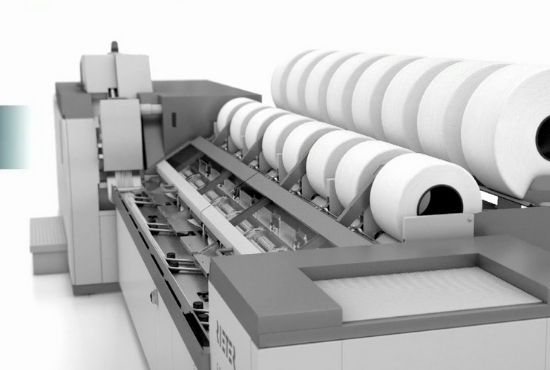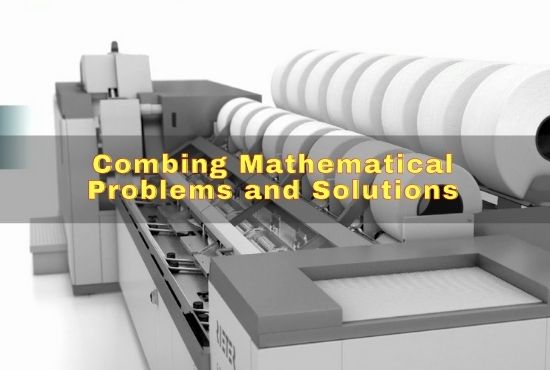Combing is the process in yarn spinning by which straightening and parallelizing of fibres and the removal of short fibers and impurities by using a comb on combs assisted by brushes and rollers is called combing. To produce a uniform sliver of required weight per unit length combing is necessary. Here goes the need to know the mathematical solutions.

Combing Mathematical Problems and Solutions
Some mathematical problems and solutions of combing are as follows –
1. Ribbon/ feed lap weight per yd 580 grain. 6 laps are fed in a combing machine. If delivered sliver weight per yds is 46.60 grain, then what will be the ribbon lap hank and draft?
Solution:
Here given,
- Ribbon lap wt./yd = 580 grain
- Doubling = 6
- Delivered sliver wt./yd = 46.60 grain
- Ribbon lap hank =?
- Draft =?
We know that,
…………………………….Ribbon lap length/Length unit
Ribbon lap hank =…………………………………………………
…………………………….Ribbon lap weight/Weight unit
= Ribbon lap length/ Length unit X Weight unit/ Ribbon lap weight
= 1/840 X 7000/580
= 0.0144 (ANS).
……………………….Feed sliver weight
Actual draft = ……………………………….. X Doubling
……………………Delivered sliver weight
= 580/46.60 X 6
= 74.68 (ANS).
2. In a combing machine coiler calendar roller speed is 118 rpm, radius 1”, Delivered sliver weight per yd is 46.6 grain. Calculate the production constant. If efficiency is 90% then also calculate the production per shift.
Solution:
Here given,
- Coiler calendar roller speed (N) = 118 rpm
- Coiler calendar roller radius (r) = 1”
- Delivered sliver weight per yd = 46.6 grain
- Production constant =?
- Production/shift at 90% eff. =?
We know that,
Production constant = Circumference speed of coiler calendar roller / 36
= (π X 2r X N) / 36
= (3.14 X 2 X 1 X 118) / 36
= 20.58
……………………………………………………………….Sliver weight
Production/shift = Production constant X ……………………… X 60 X shift X Eff.
……………………………………………………………………..7000
= 20.584 X 46.6/7000 X 60 X 8 X 90/100 lb/shift
= 59.20 lb/shift (ANS).
3. If in a combing machine draft constant is 2780 and DCP is 46, then what will be the mechanical draft of the machine? If waste is 18%, then what will be the actual draft?
Solution:
Here given,
- Draft constant = 2780
- DCP = 46
- Waste = 18%
- Mechanical draft =?
- Actual draft =?
We know,
Mechanical draft = Draft constant/DCP
= 2780/46
= 60.43 (ANS).
Again,
Actual draft = (Mechanical draft X 100) / (100 – Waste%)
= (60.43 X 100)/(100 – 18)
= 6043 / 82
= 73.70 (ANS).
4. Calculate the DCP of a combing machine from these parameters. Feed lap hank = 64 K Tex, Delivered single sliver hank = 3.40 K Tex, Doubling = 6, Waste = 15%, and draft constant = 1696. The machine is giving twine sliver delivery.
Solution:
Here given,
- Feed lap hank = 64 K Tex
- Delivered single sliver hank = 3.40 K Tex
- Doubling = 6
- Waste = 15%
- Draft constant = 1696
- DCP =?
We know that,
Delivered twin sliver hank = 3.14 X 2 = 6.80 (Direct system)
Again, Actual draft = Feed lap hank / Delivered sliver hank X Doubling
= (64 X 6) X 6.8
= 56.47
And, Mechanical draft = Actual draft X (100 – Waste%) / 100
= 56.47 X 85/100
= 48
Now, DCP = Draft constant / Mechanical draft
= 1696 / 48
= 35.33
= 35T (ANS).
5. Calculate the production for 8 hrs of a combing machine from the following data –
- Feed/Nip = 6.7 mm
- Waste = 16%
- Nip/min = 120
- Efficiency = 90%
- No. of head = 6 Feed lap hank = 68 K Tex
Solution:
Here given,
- Feed/Nip = 6.7 mm
- Waste = 16%
- Nip/min = 120
- Efficiency = 90%
- No. of head = 6 Feed lap hank = 68 K Tex
- Production/8 hrs =?
We know that,
Production = Nip/min X Feed/Nip X No. of head X Waste% X Eff.%
= 120 X 6.7 X 6 X {(100 – 16) / 100} X 90/100 mm/min
= 120 X 60 X 8 X 6.7/1000 X 68/1000 X 6 X 84/100 X 90/100
= 119.04 kg/8hrs (ANS).

